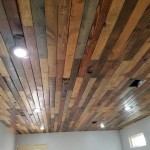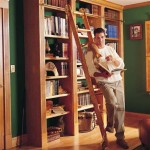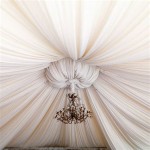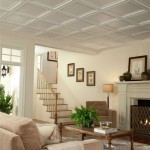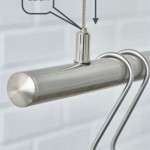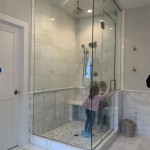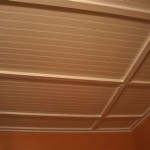What is a Vaulted Ceiling?
A vaulted ceiling is a distinctive architectural feature that has graced buildings for centuries. Characterized by its arched or curved shape, a vaulted ceiling adds a sense of grandeur, height, and elegance to any space. From ancient cathedrals to modern homes, vaulted ceilings offer a range of aesthetic and functional benefits, making them a popular choice for architects and homeowners alike. This article will explore the defining features of vaulted ceilings, delve into their historical significance, and highlight their various types and applications.
The Architectural Definition of Vaulted Ceilings
A vaulted ceiling is formed by a series of arches that span the space between two supporting walls or columns. The arches, typically constructed from masonry, timber, or metal, create a continuous, curved surface that extends from the walls to a central point. The specific shape of the arch can vary, leading to different types of vaulted ceilings. The essence of a vaulted ceiling lies in its ability to create a sense of volume and openness within a space. This is achieved through the upward curve of the arches, which draws the eye upwards and visually expands the perceived height of the room. The use of arches also contributes to the structural integrity of the ceiling, distributing weight effectively and providing a stable support system.
A Historical Journey: The Evolution of Vaulted Ceilings
Vaulted ceilings have a rich history that spans several centuries and continents. The first examples of vaulted ceilings can be traced back to ancient Rome, where they were prevalent in public buildings like baths and temples. The Romans honed techniques for constructing vaulted ceilings, particularly using materials like concrete, which allowed for the creation of large, complex structures. During the Middle Ages, vaulted ceilings reached new heights of sophistication, particularly in the construction of cathedrals and churches. Gothic architecture, renowned for its soaring arches and intricate rib vaulting, relied heavily on vaulted ceilings to create awe-inspiring spaces that pointed towards the heavens. The Renaissance and Baroque periods saw the adoption of vaulted ceilings in palaces, theaters, and other grand buildings, often adorned with elaborate ornamentation and frescoes. In modern times, vaulted ceilings have found their way into a wide range of architectural styles, from traditional to contemporary, demonstrating their enduring appeal across design eras.
Types of Vaulted Ceilings: A Diverse Range of Styles
The world of vaulted ceilings offers a diverse array of styles, each distinguished by its unique shape and architectural characteristics. The most common types of vaulted ceilings include:
- Barrel Vault: This type of vault resembles a half-cylinder extended across the entire length of the space. Its simple, continuous curve is a classic element of Roman architecture.
- Groin Vault: A groin vault is formed by the intersection of two barrel vaults at right angles. This creates a four-sided, pointed structure that offers structural strength and visual interest.
- Rib Vault: In a rib vault, curved ribs are added to the underside of the vaulting, providing support and creating a decorative pattern. Rib vaults are particularly characteristic of Gothic architecture.
- Fan Vault: This type of vault features a series of curved ribs that radiate outwards from a central point, resembling a fan. The converging ribs create a dynamic and intricate pattern.
- Dome Vault: A dome vault is a hemispherical structure that resembles a dome. It is often found in churches and other grand buildings.
The selection of a specific type of vaulted ceiling depends on factors such as the size of the space, the desired aesthetic, and structural requirements. For instance, a barrel vault might be suitable for a narrow corridor, while a groin vault could be appropriate for a larger room with a more complex layout. The choice of materials, from traditional stone and brick to modern concrete and steel, also plays a role in determining the final appearance and functionality of the vaulted ceiling.
Contemporary Applications of Vaulted Ceilings
Vaulted ceilings are not confined to historical architecture; they continue to be a design choice in contemporary homes and buildings. The inherent elegance and grandeur of vaulted ceilings can transform the look of a modern living room, dining area, or even a kitchen. The open and airy feel they create contributes to a sense of spaciousness, making them particularly well-suited for smaller spaces. Vaulted ceilings can be incorporated into a range of design styles, from minimalist and industrial to traditional and farmhouse. In addition to their aesthetic appeal, vaulted ceilings offer practical advantages. They can improve natural light penetration by providing a higher ceiling height, allowing sunlight to reach deeper into the space. This can be especially beneficial in rooms with limited window areas. Furthermore, the arch shape of a vaulted ceiling can contribute to better acoustics within the room by reducing echoes and creating a more pleasant sound environment.

Planning A Vaulted Ceiling Everything You Need To Know Checkatrade

Pros And Cons Of A Vaulted Ceiling Kate Hartman Interiors

Cathedral Ceilings Vs Vaulted What S The Difference

The Ultimate Guide To Vaulted Ceilings Pros Cons And Inspiration

Vaulted Ceilings Vs Cathedral

Vaulted Ceilings 101 History Pros Cons And Inspirational Examples

Vaulted Ceilings Pros And Cons Renovations Roofing Remodeling

The Ultimate Guide To Vaulted Ceilings Pros Cons And Inspiration

Vaulted Ceilings 101 The Pros Cons And Details On Installation Bob Vila

Coffered Vs Vaulted Ceiling Woodgrain
Related Posts

